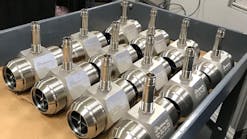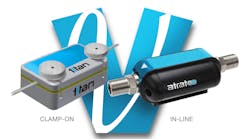Application Corner: Inaccurate flow measurement system causes overbilling
Previous articles described the sewage collection systems for two adjacent sewage districts and how the fourth flowmeter zero adjustment was offset to measure higher than the actual sewage flow.
These high flow measurements increased the proportion of sewage allocated to the first district, increasing the allocation of treatment costs to the first sewage district, which increased its sewage treatment rate per thousand gallons of sewage. As a result, the first sewage district paid more than it should — every day. More insidious and financially injurious were the surcharges that were applied during days with high flows that typically occurred due to significant wet weather events.
Some years later, the ruler used to calibrate this flowmeter fell off and was reportedly discovered on the floor of the manhole. No one knew how this happened, but a new ruler was affixed, and the transmitter was calibrated. Observation of the calibration using the zero procedure in the instruction manual ensured that the ruler was properly located. After the new ruler was affixed, the flowmeter proceeded to consistently measure lower by an amount almost equal to the previously described zero offset.
Not to be outdone, the other three sewage flowmeters were improperly installed. As in the previously discussed flowmeter, the liquid level at a particular location in the flowmeter primary element should be used to determine the flow rate. However, the transmitters that were used would not measure in that location due to their size, so they were instead installed a few diameters upstream of the flowmeter. In other words, the level should have been measured at a location indicative of the flow rate but was instead measured at a more convenient location where the level has an unknown relationship with flow rate. Further analysis revealed that the levels at these locations were typically higher than those at the proper location in the flowmeter primary element, so the flow measurement system tended to measure higher than the actual sewage flow rate, which exacerbated the overbilling.
Read about the total plant flowmeter next issue.
David W. Spitzer is a principal at Spitzer and Boyes, LLC, which offers engineering, focused market research, writing/editing white papers, strategic marketing consulting, distribution consulting, seminars and expert witness services for manufacturing and automation companies. Spitzer has written more than 400 technical articles and 10 books about flow measurement, instrumentation and process control. He can be reached at 845-623-1830 or via spitzerandboyes.com.
David W. Spitzer
David W Spitzer’s new book Global Warming (aka Climate Change): An Understandable Data-Driven Explanation and Pathway to Mitigation (Amazon.com) adds to his over 500 technical articles and 10 books on flow measurement, instrumentation, process control and variable speed drives. David offers consulting services and keynote speeches, writes/edits white papers, presents seminars, and provides expert witness services at Spitzer and Boyes LLC (spitzerandboyes.com or +1.845.623.1830).


